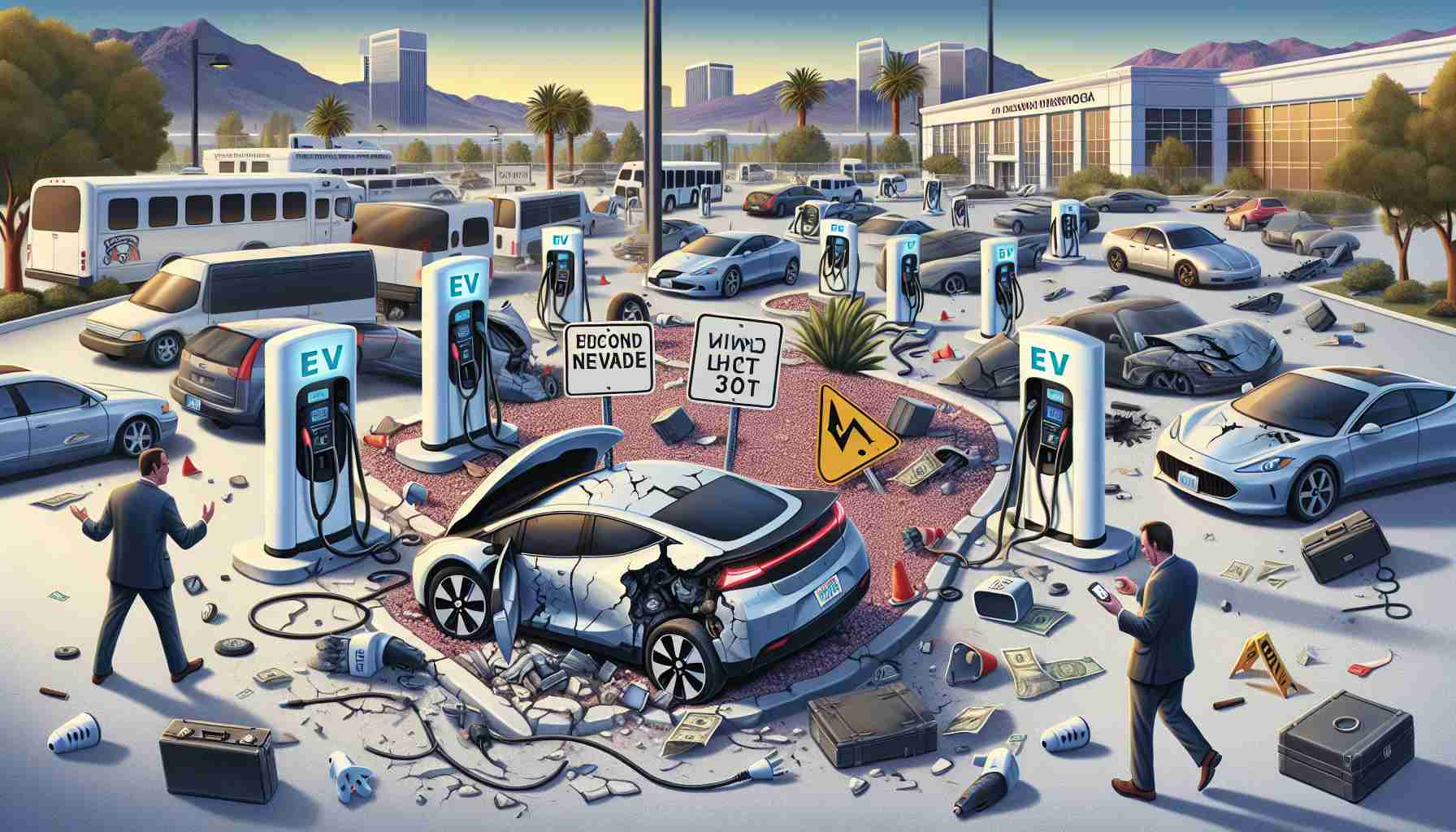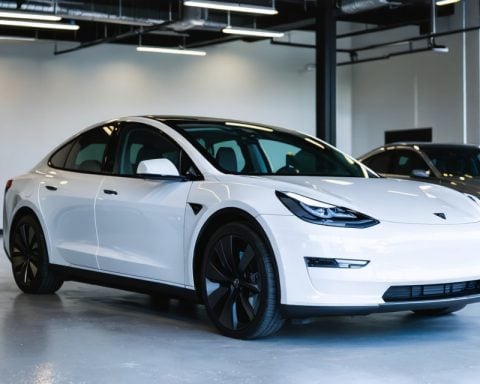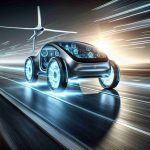- Nevada’s EV charging network faces significant delays after $38 million intended for expansion is stalled due to bureaucratic obstacles.
- The stalled initiative is part of the broader $5 billion National Electric Vehicle Infrastructure Program from the Biden Administration designed to expand chargers nationwide.
- The current process, hindered by complex procedures like the Request for Proposal, contrasts sharply with more agile efforts in neighboring states.
- EV drivers experience daily challenges securing charging spots, often leading to heightened tensions and conflicts at charging sites.
- Nevada’s infrastructure falls short with only four charging stations per 100 EVs, highlighting the urgent need for quicker implementation strategies.
- The situation emphasizes the necessity for more efficient government operations to meet the growing demand for clean energy solutions.
Beneath Nevada’s sun-soaked highways, simmering discontent unfolds as electric vehicle drivers find themselves stuck without power. A staggering $38 million earmarked for expanding the state’s EV charging network vanished in a fog of bureaucratic delays, leaving charge-seekers irate and stranded. This saga underscores not only the state’s struggle with federal programs but also a pressing plea for nimbleness in government dealings.
The initiative, nestled within the Biden Administration’s National Electric Vehicle Infrastructure Program, promised a hefty $5 billion nationwide, aiming chargers at remote locales and busy thoroughfares. While states around the country leapt at the chance, Nevada’s clunky procedural route—a rigorous Request for Proposal process—wound up in a dead end.
For drivers like Ivy White, the daily quest for a charging port turns into a battlefield. Mornings start early; the race to the cord is part and parcel of the EV ownership experience. Conflicts at charging sites are not uncommon, with tensions tangible enough to require peacekeeping interventions.
Ryan McKinnon from the Charge Ahead Partnership paints a stark contrast between Nevada’s stalling and neighboring states’ robust approaches, highlighting grassroots applications as a quicker path to infrastructure dreams. Yet Nevada’s Department of Transportation defends its decisions, arguing guidelines must be met.
With only four public charging stations available per 100 EVs, Nevada falls pathetically short—this despite having one of the highest shares of electric vehicles on its roads. The chasm between what is and what could have been serves as a harsh reminder that sitting back for federal largesse might not answer every challenge.
As charging anxiety grips Nevada’s EV community, they cast their eyes on the state, waiting to see if lessons will be learned. The clock ticks on a clean-energy future that demands urgency and change.
Stuck on Empty: Nevada’s EV Charging Crisis and the Road to Recovery
How-To Steps & Life Hacks for Effective EV Charging
1. Plan Your Charging Stops: Use apps like PlugShare and ChargePoint to locate charging stations along your travel route.
2. Charge During Off-Peak Hours: When possible, charge your EV late at night or early in the morning to avoid competition and reduce costs, as power is often cheaper during these times.
3. Regularly Check Your Vehicle’s Range: Keep track of your car’s range and schedule charges accordingly to avoid any surprises.
4. Invest in a Home Charger: If feasible, installing a Level 2 home charger can save time and stress by allowing overnight charging.
Real-World Use Cases
1. Commuters: Daily travelers benefit from planned stops along their routes to ensure their vehicles remain charged.
2. Long-Distance Travelers: Those embarking on road trips should map their charging stations in advance to ensure seamless travels.
3. Ride-Sharing Drivers: EV drivers in the gig economy need reliable charging to maintain consistent operations and earnings.
Market Forecasts & Industry Trends
– Global EV Market Growth: The global electric vehicle market is expected to grow from $170 billion in 2021 to $725 billion by 2027, according to Statista.
– Charging Infrastructure: The demand for public chargers is projected to increase exponentially, with significant investments expected to develop robust charging networks in the next decade.
Reviews & Comparisons
– Nevada’s Charging Network vs. Others: Nevada lags behind neighboring states like California and Utah, which have developed more extensive charging networks using innovative, flexible approaches.
– Charging Station Providers: Companies like Tesla, ChargePoint, and EVgo are rated highly for their ease of use and widespread deployment.
Controversies & Limitations
– Bureaucratic Delays: A significant barrier in Nevada is its slow and cumbersome RFP process, which has stymied funding deployment and infrastructure growth.
– Limited Public Chargers: With only four public stations per 100 EVs, Nevada falls short compared to both national and neighboring state averages.
Features, Specs & Pricing
– Level 2 Chargers: Typically cost between $500-$2,000 for equipment and installation, providing faster charging rates suited for home setups.
– DC Fast Chargers: More expensive to install but serve public areas well, enabling rapid recharges for busy commuters.
Security & Sustainability
– Federal programs encourage the use of renewable energy sources for EV charging, but grid reliability and energy efficiency remain challenges in Nevada.
Insights & Predictions
– Policy Changes Needed: Bureaucratic reforms and streamlined funding processes are necessary for swift charging network expansion.
– Potential for Private Sector Engagement: Inviting proposals from private companies could expedite infrastructure development and reduce public dependency.
Pros & Cons Overview
Pros:
– Reduced emissions and environmental impact.
– Lower fuel and maintenance costs for EV owners.
Cons:
– Insufficient charging infrastructure leading to range anxiety.
– Longer charging times compared to refueling traditional vehicles.
Actionable Recommendations
1. Advocate for Policy Reform: Encourage Nevada officials to streamline the RFP process and engage more with private sector initiatives.
2. Consider EV Purchase Timing: If you’re considering an EV, assess the availability of charging infrastructure in your area first.
3. Stay Informed: Engage with local EV owner groups to share tips and updates on charging availability and infrastructure developments.
For up-to-date information on the electric vehicle industry, visit EVgo or ChargePoint. These resources can provide more insights into charging station availability and future trends.













